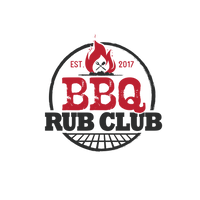
10 common BBQ mistakes that are ruining your grill game
![BBQ-3small[1]](http://bbqworld.org/wp-content/uploads/2017/07/BBQ-3small1-768x512.jpg)
Here’s a quick guide to some of the most common barbecue mistakes and how best to avoid them. Don’t let your barbecue come with a fire warning.
Mistake 1: Using too much heat
A great British barbecue means ‘the bigger the better’, right? Wrong. Contrary to many a tong-wielding instinct, a hot grill all over is the opposite of what you want. The problem will hit when your sausages are nearly black on the outside and there’s nowhere cooler to put them. You’re left with no choice but to do the awkward shuffle and line your barbecue’s edge with sausage in a desperate attempt to save from them from the heat.
The solution: Divide your coal barbecue into two zones: lay an even distribution of coals on one half, and have none, or an extremely thin layer on the other half. This will give you much more control over your cooking (and result in evenly cooked sausages). Sear on the hot side and use the cooler side for more gentle cooking. You can use cooler side with the lid on to create an oven-like setting for bigger joints.
Mistake 2: Using fridge-cold meat
We’ve all been here. Intuition says to use meat straight from the fridge, because a) who leaves meat hanging around and b) frankly, who can remember otherwise. Why is this a problem? Think about it. Cooking anything that’s cold will mean it’ll take longer to heat up. Meaning any timings you might have will be thrown off before you’ve even started cooking.
The solution: Take your meat out of the fridge at least half an hour before cooking (or a good hour for bigger cuts). Put a reminder in your diary, set an alarm…it sounds geeky but this little act of temperature sensitive kindness will give you a real head start for even cooking and avoid the whole ‘cold on the inside, cooked beyond recognition on the outside’ debacle.

Soak your skewers people.
Mistake 3: Not soaking skewers
Barbecue = kebabs. It’s a time-old, road tested, crowd pleasing way of grilling meats, veggies and everything in between without too much effort. However, there’s an average of three proper hot summer days in Britain (actual fact). Meaning it’s likely your vehicle for this oft expected alfresco dish is usually grabbed in haste from the corner shop, (having lost the ones from last year) and are used immediately – because everyone’s hungry and wants to see your legendary kebabs cooking on the grill, now. The result? Wood that burns before the food is cooked.
The solution: Make a pledge to find those sticks from last year, and soak them overnight. This’ll help to keep those kebabs legendary.
Mistake 4: Using lighter fluid
Don’t you just love your first gasoline-scented burger bite of the summer? They say good things come to those who wait and it’s certainly true when it comes to lighting a barbecue. Shops give prominence to quick-fix lighter fluid along, lumping it in as a ‘must-have’ item if you want to get your coals hot and flames going (more on that in a second). Don’t be lured in by its promises. Whilst you will get an instant fire, after an initial poof of smoke the flame will subside and die pretty quickly, leading you down a tempting rabbit hole of more fluid for more fire but no actual heat.
The solution: Go old school. Brush up on those Scout/Brownie/life skills and make kindling. Crumple up some newspaper into a mound with coals around it. Use a single match to light the paper and nurse the young flames by keeping the lid off and letting oxygen feed it so it heats the coals efficiently. Or you could invest in a chimney starter.

Hot grey coals.
Mistake 5: Ignoring ‘wait for grey’ charcoal advice
Ah, the grey/white coal thing. Yet another barrier between you and barbecue greatness. How much can it matter that they’re not the colour of concrete yet? They look hot. There’s red in there and everything. Before you know it, you’ve spread your not-so-hot coals around before they’ve reached their heat potential, causing all kinds of problems such as inconsistent heat, some funny flavours, and unpredictable cooking times.
The solution: Be patient. Think of the coals as the foundation to your barbecue house. Make it well and you’ll benefit in the long run. When the coals are grey and glowing this is when they’re at their hottest. You can test when they’re ready by holding your hand above the grill (with caution folks!) at a height about the full width of your hand. If you can hold it there for 6 seconds it’s a low heat, 2 seconds (where anymore it’ll melt your hand off!) is a high heat.
Mistake 6: Being a sucker for flames
Flames licking burgers are like sunburned shoulders in the sunshine. They’ll always go together although it’s all sorts of wrong. It can be tough to resist the drama of it all but avoid flames generously engulfing what’s on your grill. They’ll leave unpleasant sooty deposits on your food.
The solution: The odd flare up is okay but it’s the big flames you’ve got to mitigate. These are usually caused by fat dripping onto coals and flaring the fire. You can trim off some of the fat, but for anything where you want the fat in there – e.g. a marbled steak – simply move it to a cooler area of the barbecue. You can lightly spray some water onto the offending flame area to help it die down or pop the lid on to choke them completely.

Fiddling with the lid again? Put. It. Down.
Mistake 7: Fiddling with the lid
Not just there to look pretty, the lid is key piece of kit. Tempting as is it is to constantly check what’s going on under there, resist the urge and you’ll eat the benefits. Repeatedly moving the lid on a gas grill will aid the loss of heat. Doing it on a coal grill will bring in more oxygen, feed the heat, and make it hotter.
The solution: Make your peace with the lid and just leave it alone. Make a decision one way or another (depending on your kind of barbecue) and this way you’ll get a more consistent temperature.
Mistake 8: Reaching for the sauce too soon
Basting absolutely everything on the grill from the beginning may make you look like you’re a BBQ pro, but your food won’t taste like it. Brushing on sauces early on in the cooking process can result in a bitter outside layer before the inside is anywhere close to being cooked. And once that acrid taste is there, there’s nothing you can do about it.
The solution: Add any sauces later on in the cooking and you won’t be missing out on any preconceived flavour points. Your guests will actually be able to enjoy its flavour (rather than politely scrape the edges off). If your sauce is sweet, add it within the last 10 minutes of cooking time so it doesn’t caramelise too much.

Nothing says pro (or BBQ mega-fan) like a meat thermometer.
Mistake 9: Poking meat to check it’s done
There’s almost no urge like there is an urge to poke. Whilst there’s nothing inherently wrong with prodding to test your food, unless you’re a professional, it’s not very efficient. Five pokes in, you’ll probably be not that much closer to knowing its ‘doneness’.
The solution: Invest in a digital probe thermometer such as ThermoPop or Thermapen. It’s so easy to destroy beautiful cuts for fear of it being raw in the middle. A quick probe into the thickest part can guarantee your food is cooked perfectly every time. Reach 75°C – 80°C and you’re onto a winner for it to be well done. Hit around 52°C for rare and 60°C for medium. Pre-cooking meat in the oven will save time and anxiety if you’ve got lots to cook.
Mistake 10: Not letting meat rest after cooking
Another classic rookie mistake that happens inside the kitchen all year round as well as in the garden in summer. Serve too quickly and rob it of it’s chance to relax, become less ‘tight’ and take on its juices. These are the ones that get released in its relaxing time. The mob might be hungry, but this will definitely be worth it.
The solution: Put up a big sign saying ‘Do not touch, resting time’. If that doesn’t fit with your planned ambience, simply just place your meat on a plate or board to the side and don’t tell anybody about it. Wait for around 5 minutes and then serve. If you’re worried about folks thinking it’s cold, flash grill it for up to 30 seconds on each side for sizzled rested meat perfection.
